In 2014, Simon Otto shared insights into his work on How To Train Your Dragon 2 and later directed episodes of Dragons: Race to the Edge, Trollhunters, and Love, Death + Robots. Today, he discusses his journey in directing his first animated feature film, That Christmas.
What drew you to Richard Curtis’s That Christmas as your first animated feature as a director?
I had been in conversation with Locksmith Animation during the third installment of the How to Train Your Dragon films. They had courted me over the years to be a Head of Animation on Ron’s Gone Wrong and then invited me to come and develop a feature film idea of theirs. I was worried that I would move my family to the UK, only to then be mostly working as a Head of Animation, which I had done for the past 12 years at DreamWorks. By then, in between the Dragon films, I was already directing on several TV series at DreamWorks Animation (Dragons: Race to the Edge, TrollHunters), so I had really caught the bug and wanted to commit to a career as a director.
When they approached me again, this time with a children’s book called ‘The Empty Stocking’ from Richard Curtis, I got curious. Firstly, because I’m a big admirer of Richard’s work, but also because by now, Locksmith had managed to bring Bonnie Arnold on board as a producer. Bonnie produced all of the Dragon films and so it felt a little like a guarantee that Locksmith was aiming high.
It was only in those early conversations that we realized that a second and third book were being published and that we could perhaps weave the three stories together and really go for it with a feature film. The idea that Richard would write the screenplay for an animated movie was the single biggest selling point for me and so, I moved my family to London and the adventure began.
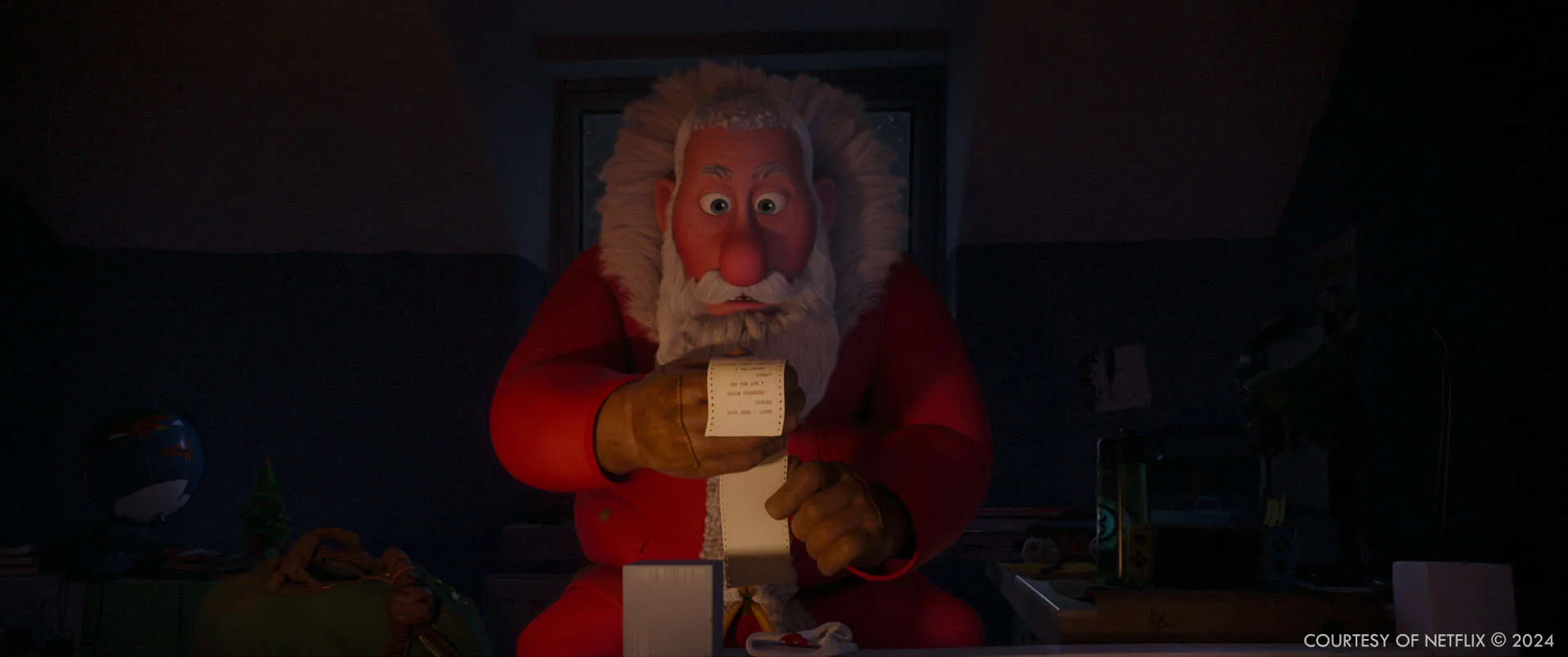
What were the biggest challenges in adapting a beloved children’s books into an animated film?
The three books are telling rather small, but charming stories. But we were aiming to create a film that would be a sweeping, cinematic experience for the whole family and blend the ideas from the books into one film. To do that in an exciting way, we had to expand on the books.
But the multi-threaded nature of the story also meant that I had to learn and embrace a different way of thinking. In animation we tend to tell single hero stories in a fantastical world with villains and big ideas. You can’t just reorder sequences in those types of linear stories, it wouldn’t make sense. But in a story with several principal characters, you can reshuffle events and sequences in all sorts of ways. The challenge is to maintain the story tension and keep the core story questions alive as we move from storyline to storyline. We had to be extremely careful not to confuse the audience or reset them each time we pull them out of a storyline.

The film intertwines several stories. How did you balance these narratives to ensure they flowed seamlessly?
A lot of it was by trial and error to be honest. But we quickly learned to focus on the emotional arc of the overall film, rather than the logical plot progression in each of the storylines. And we had to find ways to relate the kids’ experiences to each other whenever we cut to a different storyline. We were also trying to contrast the events in an entertaining way, so the audience would get something out of a sequence transition and wanting to go along with it. An example of this would be when the barn kids finally celebrate Christmas with a colorful Karaoke Party, we cut to the parents stuck on top of the van, solemnly singing the ‘Happy Birthday, Jesus’ song from the school play.
What unique visual style or storytelling approach did you aim to bring to That Christmas to make it stand out in the crowded holiday genre?
Our approach was to fully commit to the idea of making a movie that would fit into the canon of Richard’s most successful films and live up to them. But we also wanted to bring the charm, appeal and timelessness of animation to it. As a result of that thinking, I wanted nothing to stand between the audience and the film. I wanted our audience to immediately get lost in the reality and authenticity of our world and feel the contrast between the cold exteriors and the cozy, decorated interiors. We didn’t so much ask ourselves what we wanted our film to look like, but what we wanted the audience to ‘feel’. We loved the textural feel of stop motion and the whimsey of a sophisticated illustration. So, we hunted for a nice balance between a tactile realism in things like hair, snow or the textures of cloth and materials, but kept our character designs simple and accessible.
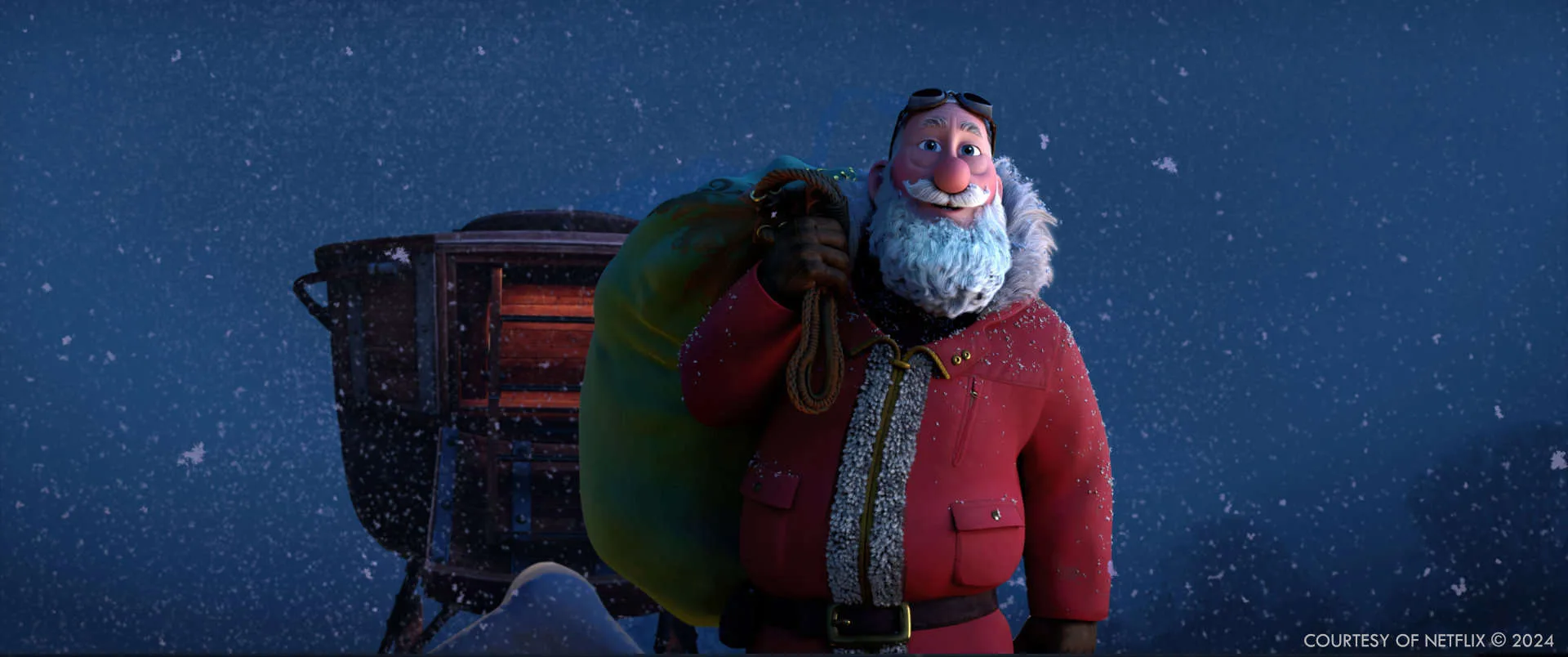
The themes of love, family, and loneliness are universal, but did you aim to infuse them with any Swiss perspectives or nuances?
As the resident tourist on the production, I was focused on keeping the world accessible to an international audience while making it as authentically British as we could. Sometimes outsiders have a way to point out things that locals can’t see anymore. For example, the first thing I noticed was that in England chimneys have these tiny pipes on top of them and I wondered how on earth kids in England believe in the idea that Santa enters the houses through their chimneys.
And I wanted the film to represent my personal memories of Christmas and winter in general, which I hoped would help make the film as truthful as possible. And as a result, between the authenticity of the world and our own various personal experiences of Christmas, the film would be universally accessible. I remember feeling so much joy, excitement and bursts of creativity with the arrival of snow and the Christmas season in my childhood.
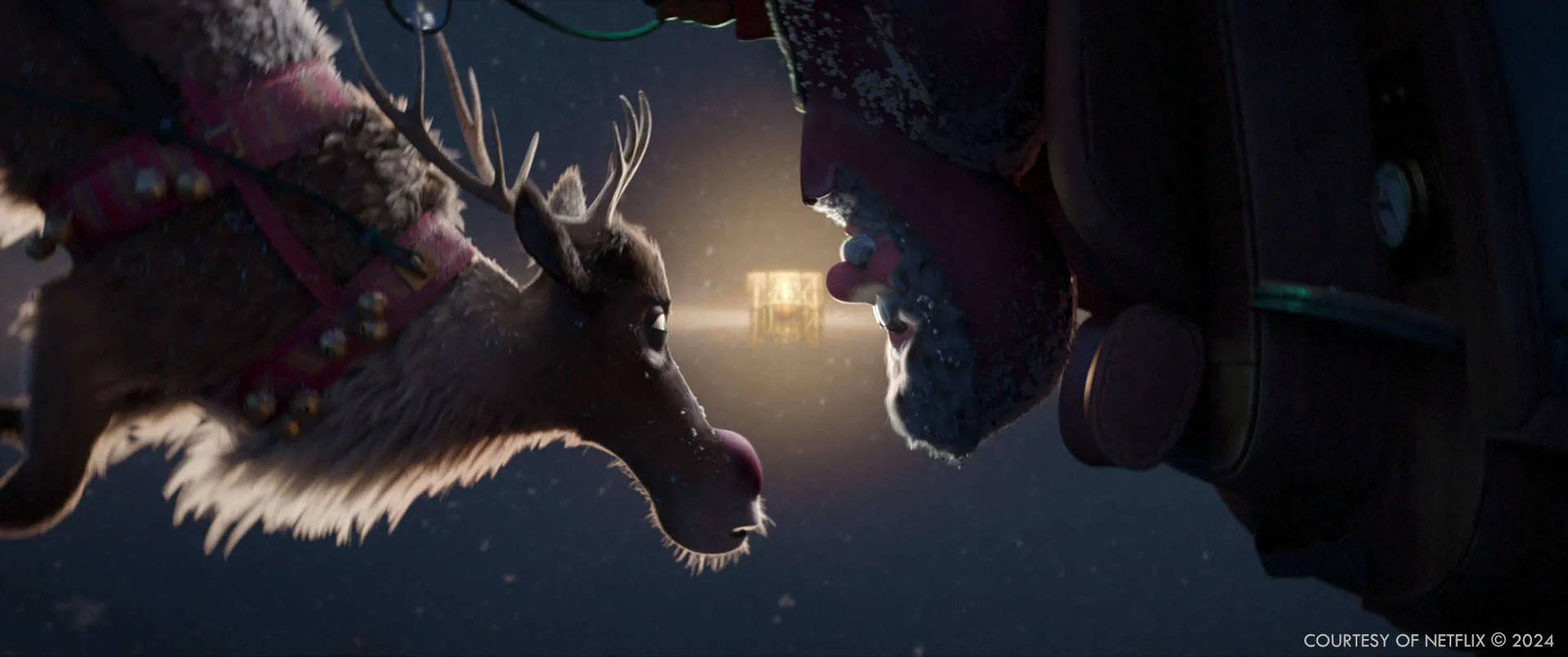
You’re Swiss-born—did you include any Swiss Easter eggs or cultural nods in the film for keen-eyed viewers?
Yes, it’s littered with little winks and references, which I thought was fun.
And when we were looking for a backstory for the tough teacher, the idea of a winter honeymoon in Zermatt made sense story-wise. The Matterhorn is the single most iconic mountain in the world, which makes for a quick read. So if you pay attention, you’ll spot, Switzerland stickers, Toblerone shaped chocolate, snow globes of Zermatt and pictures of Switzerland.

How did your background and upbringing in Switzerland influence your storytelling or visual approach to That Christmas?
I grew up in the tiny ski resort village of Gommiswald and worked as a professional snow sculptor for a winter in my youth. That understanding of what snow should feel like was helpful. Snow was such a huge part of our world. We wanted to make it fun and creative for the audience, but also use it to make the audience feel specific emotions.
By simply adding a little snowfall to a shot it would feel different. But there are so many kinds of snowfall. If you alter the size of the flakes, or add wind or atmosphere, the snowfall could feel playful, ominous, threatening or scary. So, we created a terminology to describe about 10 different types of snowfall that we could use to direct the Lighting and FX departments.
Were there any specific Swiss traditions or personal life aspects that inspired elements of the film’s world-building or characters?
Each storyline has an element of my experience growing up. I had a rather naughty older brother that would often stress me out, yet we spent every minute together. Bernadette’s desire to reinvent traditions and make Christmas playful is something that I’ve always felt and pushed for. And I took my then 12-year-old son out of his life in Los Angeles and brought him to London to make this film. His journey from sad, lonely outsider to becoming part of a gang of kids has directly influenced that storyline.
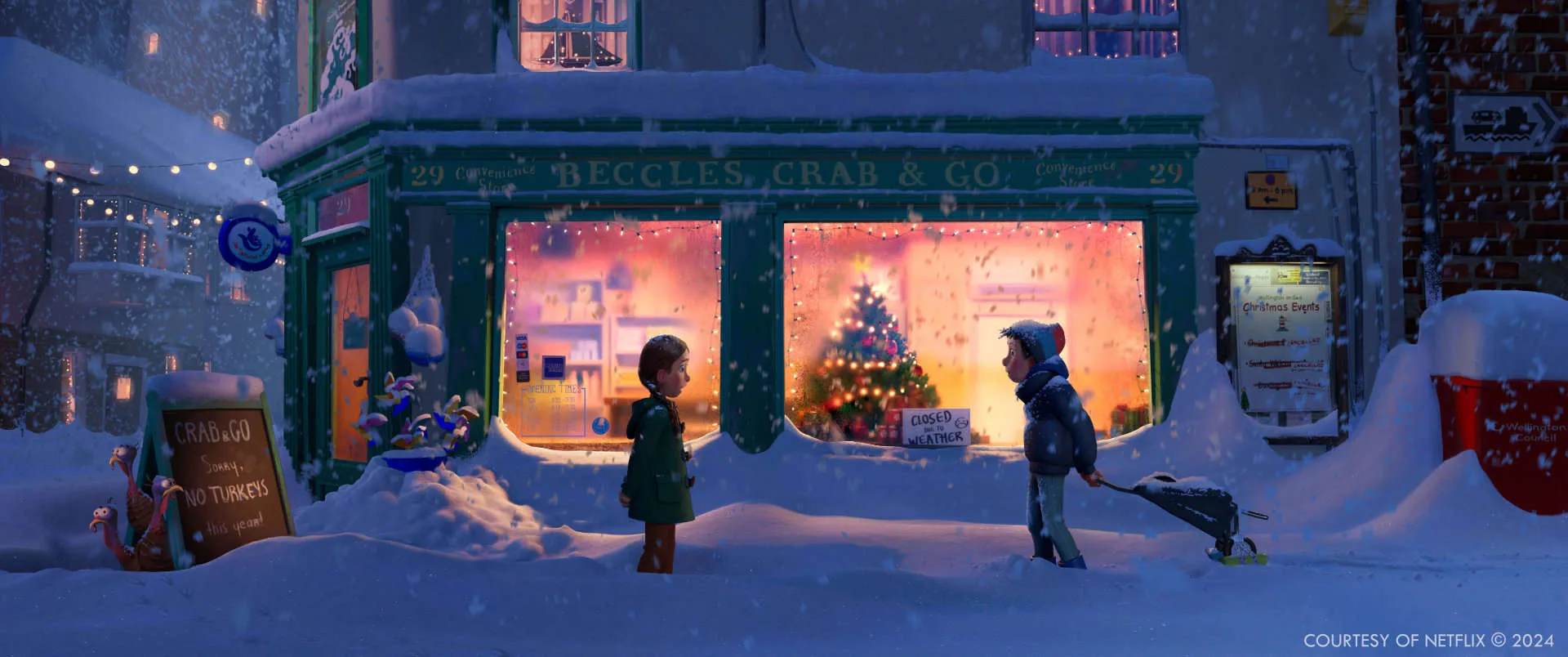
You’re well-known for your work on How to Train Your Dragon. How did your experience as an animator and head of character animation influence your approach as a director on That Christmas?
With every movie that you work on, you grow and learn. The experience of the Dragon movies taught me so much about crafting a cast of characters with an idiosyncratic, entertaining and relatable idea at the heart of each one of them. But I also learned from Dean DeBlois and Chris Sanders, to leave plenty of room for animators to explore the characters. To me, animation is an extension of the story team. If you can’t let the characters drive the story to a degree, you risk limiting the performances.
How did you collaborate with your animation team to ensure the characters felt authentic and emotionally resonant?
Because we were aiming for something relatively grounded, I asked Kapil Sharma, our excellent Head of Character Animation to have the animators present their acting references to me. That way we could explore ideas together upfront. We were lucky to have some excellent actors on our film, like Estelle Costedoat, our Bernadette lead, for example. So, there was a lot of sharing of acting references also.
Uwe Heidschötter, our character designer, was also present during animation dailies. Since Uwe and I had many in-depth discussions around the specificity of our characters during the design phase, he was an excellent sounding board for what we were doing in animation. He would then give the animators draw-over sketches to keep them as appealing and specific as we could.

Were there any specific lessons or techniques you brought from your time at DreamWorks Animation to this project?
We had a lot of DreamWorks alumni on the film, so it’s likely that this DreamWorks know-how was applied all over the production. The biggest one I can think of was our character design process. Leo Sanchez, with whom I had collaborated very closely during Dragons 2, created all of our 3D character designs.
We had developed a circular type of process at DreamWorks, which allows you to go forward fast and discover potential design issues early. This process allowed us to refine the designs with an eye towards performance and look, including surfacing and hair. Uwe Heidschötter, Leo Sanchez and his team created almost finished characters before we even engaged with DNEG. So, we worked with proto rigs, cloth and hair simulators in our design process and in the smallest group possible. This paid off hugely from a creative point of view.
Were there any unexpected technical or creative challenges encountered during the production?
We underestimated how many shots would require some level of specific snow sculpt, snow effect or snow fall simulation. The original budget had us at 30% of the shots and in the end it was closer to 80%.
So, we needed a clever process that allowed us to tackle this massive challenge. Our Locksmith in-house visual development team, led by our VFX Supervisor Doug Ikeler, created a snow making system in Houdini that DNEG then adopted. It placed snow on everything procedurally. Then giving the artist access to the depth and surface detail to increase the resolution where specific sculpting was desirable.
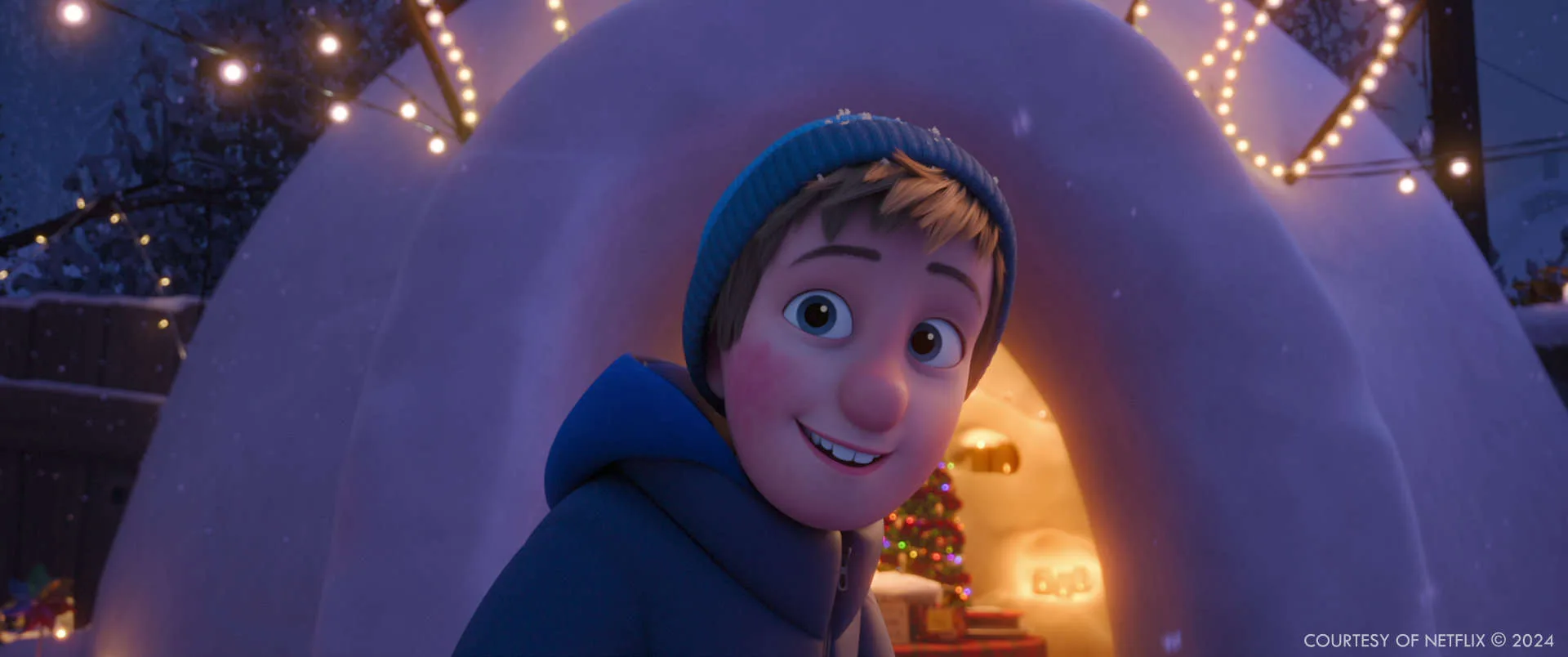
Creating a Christmas film comes with high expectations. How did you ensure the movie captures the magic and nostalgia of the holiday season?
This sounds counter-intuitive, but my answer to that was not to think of it too much. Like any other movie, I just simply wanted to dive into the research of the world we were creating, the towns we were referencing, the inner logic and emotions of our characters and the nuances of Richard Curtis’s approach to filmmaking. In my mind this was a movie about a community full of interesting characters and the expectations we lay onto family events. The film’s backdrop just happened to be a seaside town lost inside a Christmassy snow globe.
The holiday genre often appeals to a wide audience—children, families, and adults. How did you craft the film to resonate with viewers of all ages?
I mean at its heart, the story explores the collision of kids and adult behavior. So, a lot of what we’re playing with is naturally multi-layered. And the idea that the kids suffer the consequences of adult failure is fun for everyone. But I never really thought about making films for kids. I want to be entertained and laugh at it all myself. I do have a pretty strong sense of what I enjoyed watching as a kid, which I’m sure played into the choices we made. I like to caricature the real world around me, so I think it naturally plays on multiple levels.
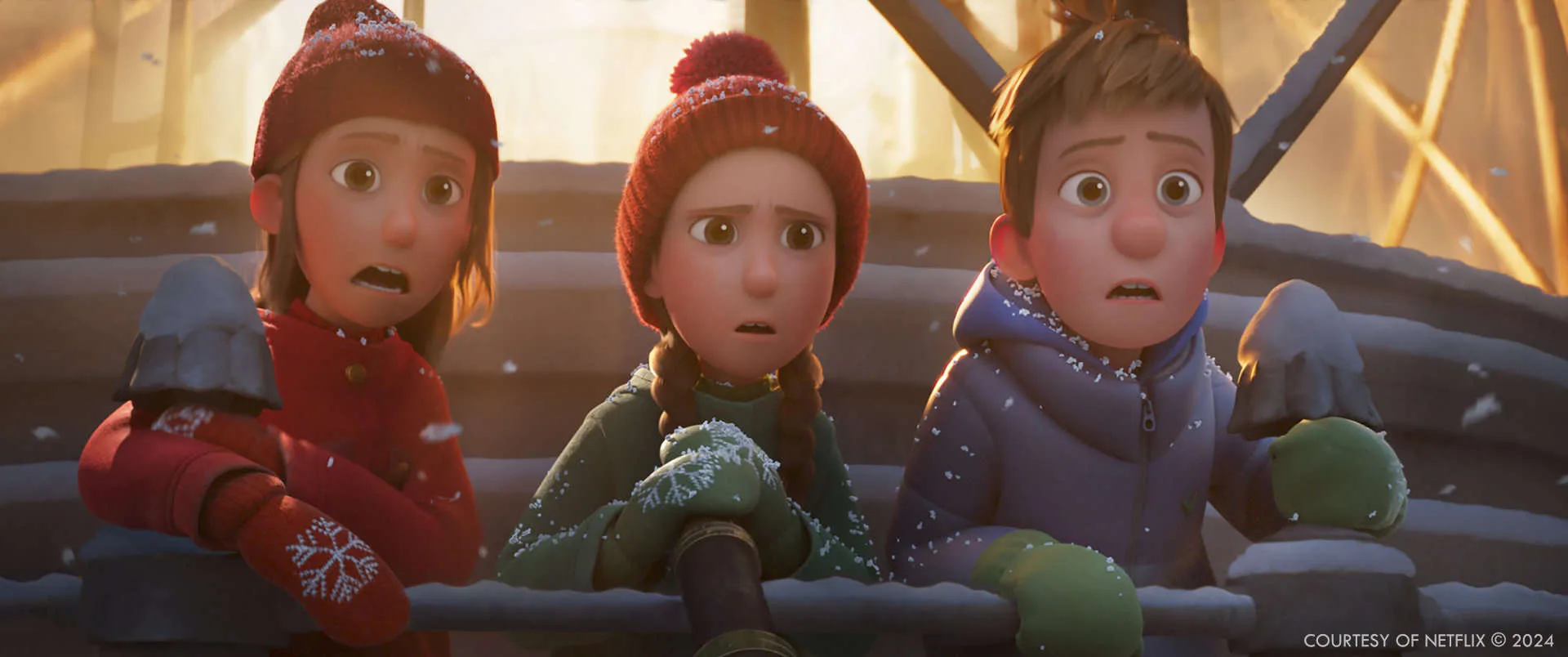
If there’s one key message or feeling you hope audiences take away from That Christmas, what would it be?
First and foremost, I want the audience to laugh along and have a great time. If the outcome is that people have a sense of joy and the desire to be together with their loved ones during this Christmas season, I’d be very happy.
Secretly, I hope that people are inspired to think of Christmas traditions through the eyes of their kids. If it was up to our kids, several traditions would probably be reimagined a bit, wouldn’t they?
Looking back on the project, what aspects of the visual effects are you most proud of?
I’m most proud of the authenticity of the world and the characters.
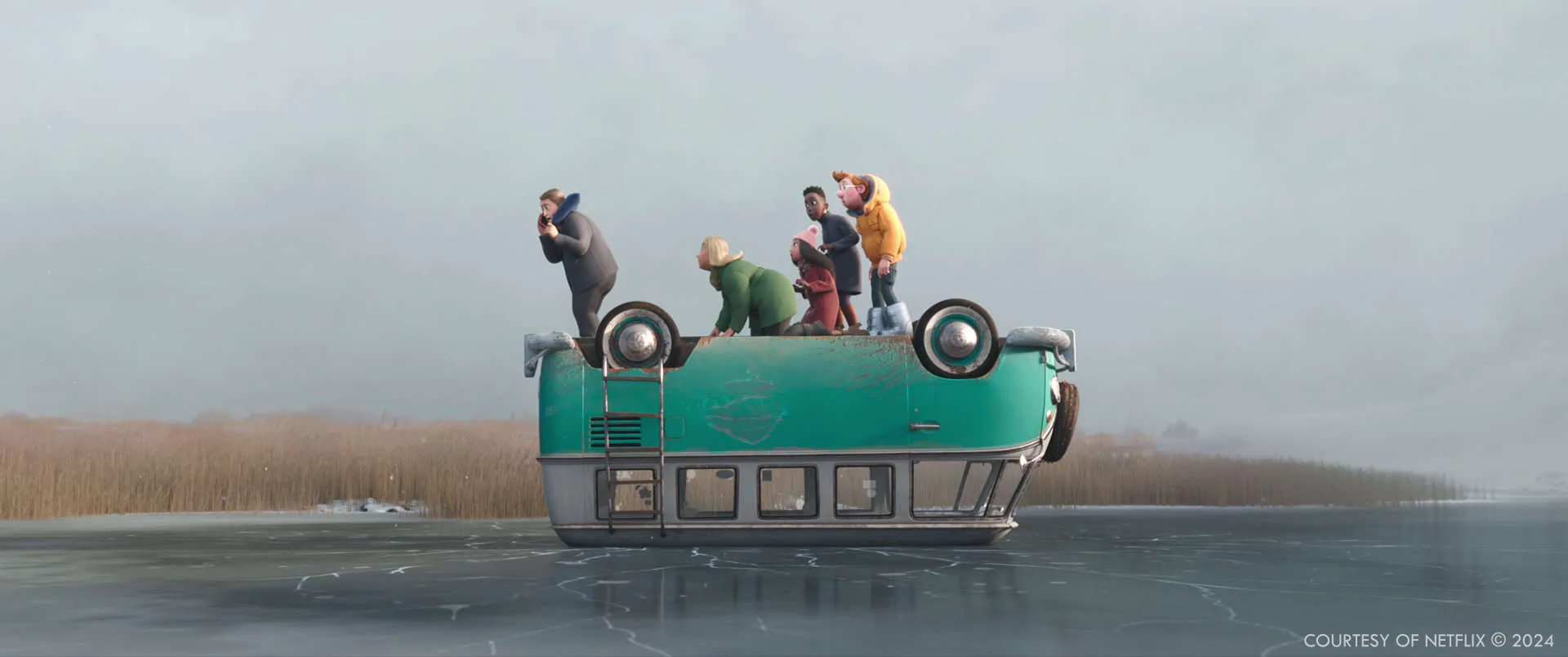
How long have you worked on this film?
About 5 years.
What is your next project?
I wish I knew, haha.
A big thanks for your time.
WANT TO KNOW MORE?
DNEG: Dedicated page about That Christmas on DNEG website.
Locksmith Animation: Dedicated page about That Christmas on Locksmith Animation website.
© Vincent Frei – The Art of VFX – 2024




